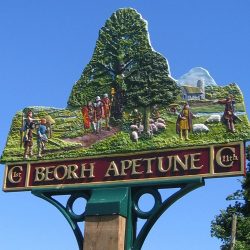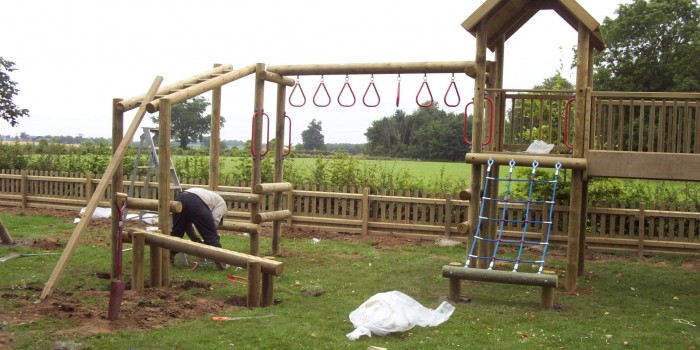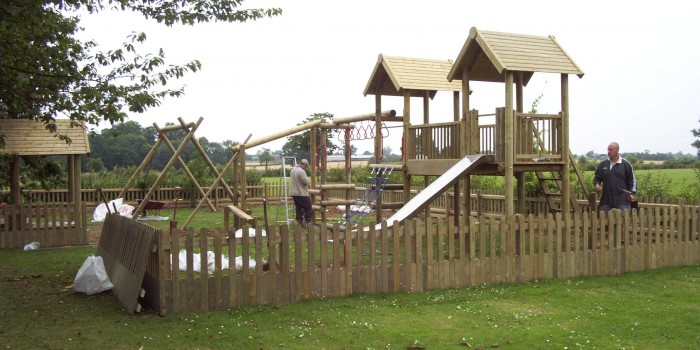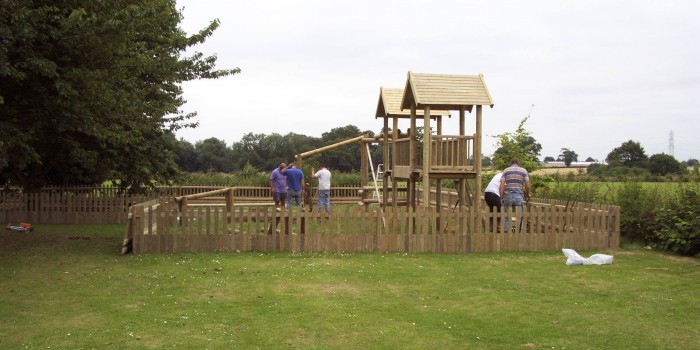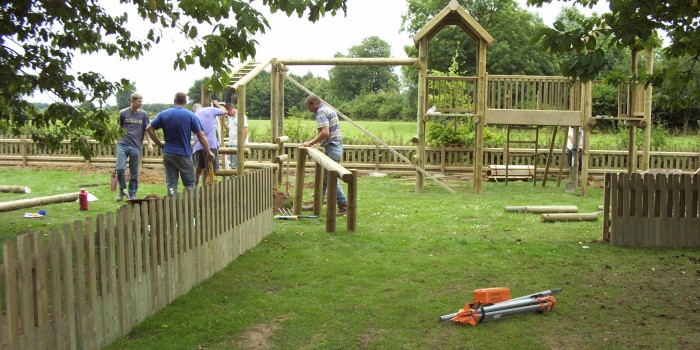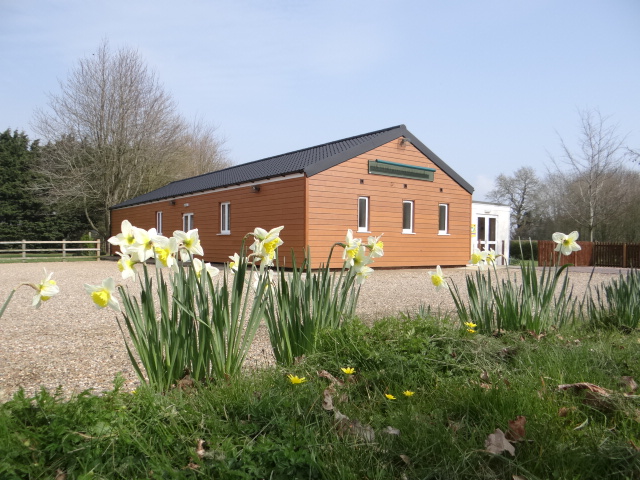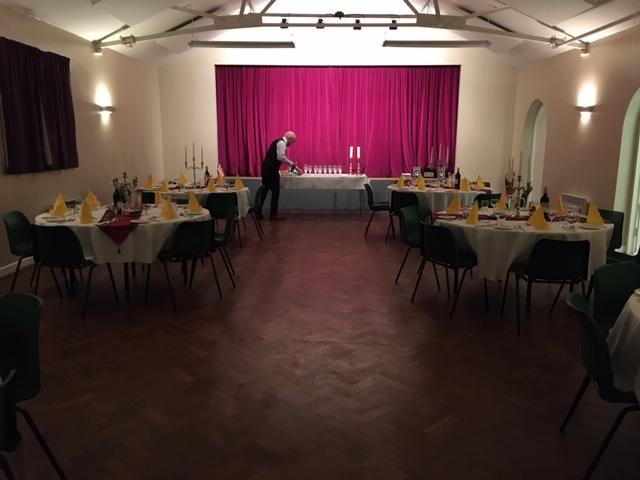Bergh Apton Village Hall was opened in June 1953 and is situated on Cooke’s Road. The full address is:
Bergh Apton Village Hall
Cooke’s Road
Bergh Apton
NORWICH
NR15 1AA
Map: Bergh Apton Village Hall Location
The Hall is a registered charity and is run by a volunteer committee. It is home to a number of local clubs and regular activities. It is also available for hire for parties and functions, with a capacity of 100 for dancing, 80 seated at tables.
Please note that due to Lockdown the Village Hall will be closed from Thursday, 4th November until Wednesday, 2nd December.
To book the village hall for events etc, or if you have any questions, please contact Hilary Ling on 01508 480439 or use the form here.
What’s On
Dog Training Monday Evenings
Contact: Tina Tel: 01603 759591
Sing-a-Long Thursdays 7.30 pm
Contact: Karen Bonsell Tel: 01508 480018
Yoga Class Fridays 10.00 am to 11.45 am
Contact: Harry Tel: 01603 412072
Pilates classes with Emma – Monday, Tuesday and Thursday mornings – see https://moveswithemma.com/ for full details.
Parish Council Wednesdays 7.30 pm Every six weeks
**************************************************************************************
Facilities
Bergh Apton Village Hall has the following facilities:
* Large Main Hall and Stage area. One of the best features of the Hall is its beautiful wooden floor.
* Kitchen with electric cooker, microwave, 2 fridges, kettles and tea urns. Plenty of crockery and cutlery. Serving hatch.
* Small Meeting Room with capacity to seat 10.
* Ladies’ and Gentlemen’s Toilets.
* Wheelchair friendly access.
* Fire doors from main hall give access to car park for easy loading. This in turn leads onto a large playing field or overflow car park. There is also a grassed garden area suitable for
outdoor seating and a children’s play park.
**************************************************************************************
Hiring the Hall
The Hall is available for hire for parties and functions by contacting the Booking Clerk on 01508 480439 or by e-mailing Enquiries
The Clerk will then make a provisional booking and send out a Hiring Agreement. You confirm your booking by returning the signed form with the requested fee. This may be the full hire cost, or just a booking deposit, depending on how far in advance the Hall is booked.
Alcohol
The Hall itself is not licensed for the sale or provision of alcohol. If you are going to sell alcohol at your event and are not sure if you need to get a licence, now called a ‘Temporary Event Notice’, then talk to the helpful people at South Norfolk Council on 01508 533633.
There are a number of local publicans that can provide a bar for events. Both The Dove and The Wheel of Fortune have supplied bars in the past at our hall. They can also apply for a licence for you.
Rates
The layout of the Hall makes it difficult for separate groups to use the small meeting room and the main hall at the same time therefore we always hire the Hall as a whole, regardless of which area is required.
Terms and Conditions and Information for Hirers.
Our T&Cs are on the back of the Hiring Agreement. We have further documents full of important information for hirers. These include some do’s and don’ts found in the USER’S GUIDE and also GUIDE TO THE VILLAGE HALL, which contains information of a more practical nature such as how to operate the heating and where we keep the mop!
**************************************************************************************
The Committee
Bergh Apton Village Hall Management Committee is made up of local people who give a little or a lot of their time to run the Hall. If anyone is interested in joining us please do not hesitate to contact the Secretary.
Sue Bewick, Chairman
Ray Wharton, Vice-Chairman & Thurton & Bergh Apton Players Representative
Peter Lyle, Treasurer
Hilary Ling, Secretary & Bookings
Evy Sayer, P.C.C. Representative
Lynton Johnson, Bergh Apton & District Society Representative
Tina Devlin
Hannah Garrard
Milton Harris
Tiff Phoenix
Hugh Porter
Peter Sunderland
**************************************************************************************
History
Early Days – The Campaign to Build the Hall (1938-1953)
Bergh Apton decided to build a village hall in 1938. Between the decision being taken and the hall being opened fifteen years later there would be local squabbles, much disappointment over fund-raising and, to cap it all, a world war!
The story began when Bergh Apton residents met at the school (now private houses, opposite the church) under the chairmanship of Thomas Denny-Cooke of Bergh Apton Manor. The meeting agreed to set in train the building of a village hall. The minute book tells it thus:
A Parish Meeting was held at the School on the 19th January to discuss the question of building a Village Hall for Bergh Apton. Mr Denny-Cooke took the chair. There was a large attendance of Parishioners and it was decided with only one dissentient [sic] to proceed with a scheme and form a Committee to deal with it. The following persons were elected, T H Denny-Cooke Esq, Brigadier Gen. Dale, J Annis, C Carver, W Keeler, F Keeping, V Kemp, W G Panks, A Tubby, A Vincent, Mrs Denny-Cooke, Mrs Freestone and Mrs Tubby.
This minute, like those of the next ten years, was written in the elegant hand of Fred Keeping of Welbeck Road, the Norwich Union insurance agent in the village who was to serve as secretary until May 1949.
The present-day Bergh Apton fete was born in these early days of village hall fundraising. The first one appears in the minute of a meeting on 23 March 1938 when Thomas Denny-Cooke offered the grounds of the Manor on Whit Monday for a fete that raised £30 5s 4d. That may seem rather modest when set against today’s typical revenue of £3,086.68 (2004) but it was a very tidy sum in those days.
Progress was threatened soon after that by a spat that began when, at the annual parish meeting on 4 April, those present agreed ‘to apply money left over from the Coronation celebrations in 1937 (King Edward VIII’s coronation, aborted when he abdicated to marry American divorcee Wallis Simpson) to start a fund for the provision of a children’s playing field’.
The protagonists of the village hall project argued that these surplus funds (an amount of £6 5s 2d) should have been donated to the village hall building fund instead. A debate on the issue took place on 26 April 1938 and judging from the evidence of the minute (Village Children’s Playing Field minute book) it was stormy.
It even involved a lively if short-lived altercation between Bergh Apton titans Thomas Denny-Cooke and Brigadier General Dale of Holly Lodge on Sunnyside. One may imagine the atmosphere in the school room as the General had the temerity to silence Thomas Denny-Cooke who was not only the long-established seigneur of the village and owner of much of its land, but a Justice of the Peace to boot!
When calm returned to the meeting the playing field committee agreed to consider an impromptu offer made by Mr Denny-Cooke to provide a piece of land for the playing field.
More drama was to come. At its next meeting a few days later, the playing field committee rejected on two grounds Mr Denny-Cooke’s letter that clarified his verbal offer: the land specified was too far from the school; and the proposal to restrict access to the months between October and March (perhaps to take a hay crop off it in the summer?) was unacceptable.
Despite their evident irritation the Playing Field Committee then proved to be pragmatists. Recognising that the proposal to build a village hall had greater support in the village than the playing field did (and thus would win any battle for funds) they agreed that the coronation surplus fund should be handed over to the village hall project. A minute dated 3 May 1938 reveals their thinking:
This [the handing over of funds] would enable them to complete the village hall this year in all probability. The necessity of raising money for the hall would disappear before the end of the summer and we should be free to gather funds, not only almost alone in the field but with a united and friendly village to help us.
Ah, if only life was so simple! It was not that summer but the one fifteen years hence that the village hall opened its doors. The intervening time was spent battling to raise the funds needed to build, frustration in the face of bureaucracy, rising prices, apathy and the Second World War. The story of that struggle is told in great detail in the minutes of a committee whose determination to succeed will win the respect of anyone who has the time to read of their efforts.
Despite the war years wreaking havoc with their plans the minute book shows that the committee considered it their duty to join in the fight against Hitler. At a public meeting in the school on 25 July 1940, soon after the fall of France and the retreat from Dunkirk, the village carried unanimously a motion proposed by Brigadier General Dale (now vice chairman of the hall committee) and seconded by Jessie Freestone, the wife of George Freestone of Valley Farm on Welbeck Road. It stated:
That the interest received on the amount invested for the Parish Hall in Defence Bonds be handed back to the Government for the duration of the war as a small contribution from the parish of Bergh Apton.
At the time this motion was passed these Defence Bonds comprised £150 of the £170.9.10d the village had raised to build the village hall. In effect, and with no prospect of recovery at the time, they handed over the majority of their funds for the war effort.
Things got no better with the cessation of hostilities in Europe in May 1945. Progress was frustrated by material shortages and the consequent rising prices, linked with a lack of government resources to make grants and loans for such projects.
Nor was the committee’s relationship with Mr Denny-Cooke (who, you may remember, promised in 1938 ‘to give the land for a village hall and convey the same free of cost’) easy. On 19 September 1949 he confirmed that offer but, less than a fortnight later, he told the committee that he did not feel justified in giving an acre because, as his letter states, ‘the car park and bowling green are unnecessarily extensive’. Consequently he redefined his gift as an area measuring 60 yards by 60 yards (about 55 metres x 55 metres) and the committee agreed, in a minute of 7 October 1949, to ask an architect named Dewey to draw up plans for a building measuring 50 feet by 28 feet (15.25 metres x 8.50 metres).
The Denny-Cooke family had been consistent supporters and leading members of the project throughout so it may be that Thomas’s restriction was some point of principle rather than a difficulty laid in the path of the venture. Whatever the reason, the restriction was withdrawn some six months later when, according to a minute of 19 May 1950, he gave a further quarter of an acre of land to the project.
The site that Denny-Cooke gave was originally livestock grazing on the Manor Estate. For some time before this he had permitted its use for football and cricket matches for which the teams used the Reading Room (now Glebe Cottage on the other side of Cooke’s Road) as changing room and equipment store.
The situation in late 1952 was bleak indeed. Building costs continued to rise and sources of funding seemed to clash, as one source required one thing and another required the opposite to approve funding. Arthur Vincent advised that the lowest price he could give them for a simple hut with no internal divisions was £1,045 and they had only £846 10s 0d in funds.
The breakthrough came soon after, and as a consequence of, the death of Thomas Denny-Cooke. On 17 November 1952 the then chairman Sandy Newman Sanders, the Anglia Television announcer who lived at St Martin’s Acre (now White Willows), told the committee that Mrs Denny-Cooke had given a donation of £200 to the fund in memory of her husband who had died that September.
We must not sniff at this apparently modest amount. In today’s terms it was something approaching £5,000. Mrs Denny-Cooke, as a great supporter and long-serving member of the committee, would have known that this was the figure that would take them over the line that permitted the build to start, and that’s exactly what happened. The committee agreed there and then ‘to unanimously approve a proposal to erect a Dri-Crete hut as Village Hall at a cost of £1,035’ (minute of 17 November 1952).
£1,035 was Arthur Vincent’s revised best price to build what is in essence the village hall we still use today. We know precisely what was agreed as it is recorded in the minutes of that meeting:
The Hall to be erected with “Dri-Crete” blocks in natural cement shade, 66 feet x 24 feet (inside 22 feet 6 inches) with concrete [word unreadable], £915. This sum to include £25 for electrical wiring. Plain deal floor extra £120 approx.
Suddenly it was all activity. Local and national government and other bodies agreed to make grants and loans for both the building and the contents (that included a radiogram for village dances!), Mrs Denny-Cooke undertook to find the guarantors necessary to secure the loans, and construction began.
At last, on the day of Queen Elizabeth’s coronation on Tuesday 2 June 1953, the village hall was declared open when Reverend Martin (chairman of the committee) and Mrs Denny Cooke performed a ceremony that included a dedication service conducted by Mr Martin. No other details of the day are recorded but Grace Forder remembers that her brother Harry won the prize in the ‘Bowling for a Pig’ contest. He took home to Bussey Bridge his prize – a real live sow piglet – that the family named Isabel (after the donor Reg Ishbel, manager of Town Farm!).
The Late Twentieth Century – Changes and Modifications
Much happened in the first fifty years of the village hall’s existence. It has seen three major extensions and many more modest but important improvements such as the replacement of the original “Elsan” chemical toilets with flushing ones in the 1960s!
The first major work in 1985, at a cost of some £1,900 (minute of AGM 17 April 1985) provided a new kitchen on the south-east corner of the hall to replace the original one at the north-west corner. The cost of this project was kept down to a reasonable figure by dint of the late Barney Curtis and Tony Knights doing the major work, with manpower provided free of charge by members of the Bowls Club.
In 1992 two major changes took place at the same time. The small stage at the north end of the hall was removed to make way for a new theatre-style stage complete with proscenium arch, built into the area that housed the original kitchen and store/meeting room. At the same time the 1985 extension on the east side of the hall was extended to add a committee room, access to the garden on the east side, a wing for the stage and a new emergency exit. All this created a much-improved venue for The Thurton and Bergh Apton Players who had recently arrived from Thurton & Ashby village hall to put on their ambitious and popular Musicals produced by Ray Wharton, their ebullient and talented leader.
Management
All these works were completed under the chairmanship of Trevor Sillett (1985), Fred Littlewood (1986) and Canon John Phillips (1992).
Having introduced these three officers of the committee responsible for the operation of the village hall, we should look at the constitution that orders their doings. It was first considered in detail in 1949 when the conveyance of the land donated by the Denny-Cooke’s was being finalised. The committee agreed that control of the building should be non-political and non-sectarian (minute of 16 May 1949) and that these conditions should be incorporated into the conveyance being prepared by the Loddon solicitor Gilbert.
Ownership of the land, on payment of the sum of £10, was finally conveyed to a Trust on 20 March 1950 with the Revd Frederick William Martin and Captain Philip Theodore Symonds of Town Farm as trustees. The trust deed specified that the hall be used:
for the purposes of physical and mental training and recreation and social moral and intellectual development through the medium of reading and recreation rooms, library, lectures, classes recreations and entertainments [sic] or otherwise as may be found expedient for the benefit of the inhabitants of the parish of Bergh Apton
Management was vested in a committee of seventeen people. Six are elected at the AGM and eight are nominated by local organisations that use the hall on a regular basis. The latter that were to the fore when the original deed was drawn up were the Parish Council, Bergh Apton School Managers, Women’s Institute, Royal British Legion, Red Cross, Girl Guides, WVS and the committee of the Flower Show. The final three places on the committee are for people invited by the committee to join them (presumably so that the committee can use their particular skills and talents).
That management structure is still in place. The specified nominating bodies have, with the approval of the Charity Commissioners, changed with the changing pattern of village life and society to the extent that the Parish Council is the only one of those original bodies unchanged in form. The others who form the list today are our local (Alpington and Bergh Apton Voluntary Aided) infant school, Bergh Apton Community Arts Trust (BACAT), Bergh Apton & District Society, the Flower Arranging Group, the Parochial Church Council (PCC) and the Thurton and Bergh Apton Players.
The People Who Made It All Happen
From the start of the project in 1938 the minute book of the village hall committee records the names of village people who first planned it and then ran it. The list of those who served up to the date the Book of Bergh Apton was published in 2005 numbers one hundred and twenty four names and the list grows with every passing year. Between 1938 and 2012 the following people have served as chairman:
1938 – 1948 Thomas Denny Cooke JP – The Manor
1949 – 1950 Captain Philip Symonds – Town Farm, Church Road
1951 Beatrice Denny Cooke – The Manor (and later The Beeches, Threadneedle St).
1952 Sandy Newman-Sanders – St Martin’s Acre, The Street
1953 – 1955 Rev’d Frederick Martin – The Rectory, The Street
1956 – 1970 Monsey Vincent – The Villa, Threadneedle St (now Laurel House)
1971 – 1975 Josie Whiting, Church Road
1976 – 1983 Kevin Parfitt, Church Farm
1984 – 1985 Trevor Sillett, Church Road
1986 – 1989 Fred Littlewood, Seven Bells, Threadneedle St
1990 – 1995 Canon John Phillips, Mere Farm House, White Heath Road (now of Fieldside, Threadneedle St)
1996 – 2010 Maggie Smith, Church Road (now of Cock Road, Hardley)
2010 – 2012 John Burrage, North Court, Mill Road
2012-2017 Maggie Smith
2017-Present Sue Bewick
Activities
Now you’ve met the management it’s time to meet people who use the hall.
It has been the scene of many happy occasions both corporate (when the management committee or one of the other Bergh Apton body arranges events) and private (when the hall is hired by families or organisations to hold their own functions). The very first of these private functions was only two months after the hall was opened, when Fred Littlewood of Threadneedle Street and Violet Jermy of Church Road held the Reception after their wedding in the parish church on 15th August 1953. Fred and Violet have gone on to keep a very close association with the hall through Fred’s chairmanship of the management committee in the 1980s (when Violet was his vice-chairman) and through their interest in the Bowls Club of which they were leading lights until its demise in 2010 when it was merged into the neighbouring Alpington club.
The Bergh Apton Society, a recent re-birth of the Bergh Apton & District Society formed in 1993, uses the hall for its ‘home’ meetings when it is not away on its programme organised by Terry Yallop and Trevor Sillett who took over the organisation from its founder and chairman Lynton Johnson, famed in his time for his coach outings that were known euphemistically as ‘retail therapy trips’!
We have already written of Lynton’s partner Ray Wharton who founded the Thurton and Bergh Apton Players in 1992 to bring Musicals onto the village hall’s newly-enlarged stage. These extravaganzas played to full houses for their annual three-week runs that brought live theatre to the village and always lived up to Ray’s promise on the closing night (echoed to the rafters by the audience!) that “next year’s production will be bigger . . better . . and even MORE spectacular!”. He kept that promise for fourteen years until he retired from this demanding role in 2006.
The wide spectrum of events is illustrated by the fact that two funeral services have been held in the hall. This is as it should be if one pauses to reflect that the proper rhythm of life in a small community brings both happiness and sorrow in their turn.
Earlier reference to the Bowls Club calls to mind the sports and social clubs that have used the hall. The Bowls Club itself first appears in the minutes in April 1984 when Neville Sutton reported that the club ‘was in a league and at present were the top of the league’. He also reported that the club hoped to obtain a second bowls mat for which the Parish Council had already agreed to grant £100 of the £376 required. The club met in the hall every Tuesday evening and most Friday evenings until it merged with Alpington in 2010. Its success in competitions was witnessed by the contents of its trophy cabinet that housed cups, prizes and trophies from all over East Anglia.
The hall was home to the Good Companions for many years and a Rifle Club moved here from Alpington in 1984 (but there is no record of how long it stayed). Josie Whiting’s famous whist drives were a regular feature of the hall’s bookings diary from the very beginning until 1991. Its card tables still form a vital part of the equipment used each year at the annual village fete.
This last point prompts a little more comment on Bergh Apton’s annual Fete that is bound up with the history of the village hall. We know from newspaper archives that there was at one time in the 1930s, a Rectory garden fete but there is no record of its lifespan. In its present form the Fete has been going since 1938 with only three interruptions; during the Second World War, in the year of the village hall’s Silver Jubilee in 1978 (Secretary’s report for year 1978/9) and in 2011 when it gave way to the Sculpture Trail. In every year except these it has been held at the Manor in a tradition begun by Thomas Denny-Cooke and carried on by his successors as owners – Mr & Mrs Sidney Morse, Major and Lady Ann Mackenzie and, since 1989, by Kip and Alison Bertram with their daughters Verity and Felicity.
The fete began as a means of raising funds to build the village hall but Major Mackenzie introduced the concept of sharing both the work and the proceeds between the village hall and the parish church. This co-operation between the only two public buildings in the parish continues happily to this day.
At one time the fete programme had an evening dance in the village hall but its popularity dwindled and an attempt to revive it in 2006 was, frankly, a bit of a flop! Social change has meant that these events are expensive to run (even a modestly-talented live band rarely gets out of bed for less than £400) and public support for “local hops” is at a low ebb, perhaps because of the pressure of other demands of people’s time. The result is that income simply cannot offset costs.
But there are two other events for which there is enthusiastic support. One is the Annual Christmas Lunch run by a team organised by Kevin and Theresa Parfitt to provide a sumptuous turkey lunch for every village pensioner. Aperitifs and wine are donated; the meal is cooked by a veritable army of volunteers in the kitchen; and the food is served by yet another army of the young people of the village. If you want to see a community in action, this is the occasion to do it!
The other great culinary experience is “Kevin’s Kitchen” that brings together the same team to lay on breakfast on New Year’s Day and other important festive occasions that included a “Right Royal Breakfast” to mark the Queen’s Golden Jubilee in 2012.
Mention was made a little earlier of the Sculpture Trail. The village hall is the nerve-centre of this huge occasional (usually every three years) event that brings many thousands of people to the village to see sculptures in village garden settings. Public catering, exhibitions, live music venue, loo stop, meet-and-greet point, park-and-ride bus stop, ticket sale point and disabled parking location – the village hall is all these things and more in three hectic summer weekends when the Trail is on. In return, it is one of the main beneficiaries of the funds raised by the Trail.
The village hall has been used to keep a check on the health of Bergh Apton residents and those in neighbouring villages. A Doctor’s surgery operated in the hall in the late 1980s and Norfolk County Council’s Health Department ran a monthly children’s clinic in the hall in the 1950/60s.
The County Council described this as an ‘infant welfare centre’ or ‘child health clinic’ during its lifetime of fourteen years between 20 September 1955 (NCC Public Health Dept letter of 8 August 1955) and 3 July 1969 (letter of 4 July 1969). An article in the Eastern Daily Press when it opened wrote that it served the villages of Alpington, Ashby, Bergh Apton, Hellington and Yelverton. Thurton is notable for its absence from the list but it may have had other arrangements for the care of its children.
A letter written to Beatrice Denny-Cooke, Hon. Secretary, by The County Medical Officer on 28 January 1958 gives a human touch to this contract. It complains that ‘the village hall is not too warm when the Infant Welfare sessions are held’ and goes on to ask that ‘the fires be lit in the morning in order that the room may be warm enough for undressing the children by 2.00 pm’. Those of you who know how cold the hall can be on winter days will surely appreciate the validity of this request!
It isn’t possible to include every organisation that has used the space in or around the village hall – there are too many. But, as a snapshot in time, the current schedule of regular users may suffice to show its diverse usage. The list includes a dog-training class, a painting class (will it one day produce such quality that we will be famed for the Bergh Apton Colourists!?), Zumba (a current dance/exercise craze) and Yoga, Bergh Apton Society and, as you would expect, the village hall’s own management committee.
The Parish Council uses the hall for its meetings as does the Bergh Apton Local History Group when it organises speakers on topics of interest to its members. Once-a-year events include the annual parish meeting, the AGM of both the Conservation Trust and the Local History Group and the AGM of the Village Hall itself.
Another even more recent but increasingly popular lunchtime project is an annual ‘pot-luck lunch’ organised by members of the parish church to follow the Unity Service (January) and Harvest Festival (September) when everyone brings enough to eat for themselves and one other, and we sit down to catch up with each other’s news relieved of the responsibility of mass catering.
The hall is the venue for a gathering in early November when the families of the village’s Fallen in the two World Wars gather from all over the County and far further afield with today’s residents for a mardle, hot soup and coffee after the annual Remembrance Day service in church.
The hall is also a venue for concerts and arts workshops arranged by Bergh Apton Community Arts Trust (BACAT) that are both great fun and fulfil its constitutional objective to bring artists in many media to the village to share their skills and experience with local people. Those who attend these workshops meet some of the costs (on the basis that things paid for are more valued) but they are underwritten and shared by a fund that BACAT established with income from Sculpture Trails.
All this indicates that the hall is alive and kicking, and filling the role foreseen by that group of village people who gathered in the school way back in January 1938.
The Playing Field Committee’s Hopes Fulfilled
But what of that other venture of 1938, the Village Children’s Playing Field Committee? Its original aims were unfulfilled in the lifetimes of its members. A quarter of a century later a modest scheme to provide a see-saw, two swings, two seats and a sand pit was championed by the village hall committee in 1961. That, too, foundered on the rock of funding when it failed to win a grant from the Playing Fields Association.
In 1971, and apparently without external funding, the committee installed a slide and some swings that were removed in the late 1980s when their design and condition no longer met the standards of current equipment safety regulations. A single set of goal posts that had been erected at some time remained for a while but, suffering initially through lack of use and finally from vandalism, they were removed in 1998 or 99.
At about that time Karen Myhill of Loddon Road and Suzanne Mayes of Gravel Pit Lane, two mothers with young children, decided to do something themselves. They got grants from South Norfolk Council, trusts and other bodies and organised fund-raising events in the village to meet the costs of erecting a new integrated play area in the grounds of the Village Hall.
They achieved their target of £19,281.75 when Bergh Apton’s Tenwinter Trust and BACAT (the oldest and the newest of Bergh Apton’s benefactor bodies) made grants to the project. Work began. Brigadier General Dale and the members of Playing Fields Committee of 1938 would have been proud of them!
Our County Councillor Adrian Gunson formally opened the play area on 8 September 2002, when it was given into the safekeeping of the Parish Council.
The Future
This play area, that had an upgrade of its equipment in the Spring of 2012, is the latest improvement in a long line of alterations and extensions to adapt the village hall. Nothing stands still, and the management committee has been looking for the last five years at, and raising funds for, either a major overhaul or even a complete re-build to meet the changing needs of the community.
Some of that change is imposed by an increasingly rule-bound society with laws and regulations that aim to give risk-free and equal access to absolutely every one. This latter objective can impose both personal stress and corporate liabilities on the people who run rural facilities like Bergh Apton’s village hall. At times these unpaid volunteers must be tempted to walk away from the struggle as they strive to provide a small community like Bergh Apton with simple facilities for modest activities at a reasonable cost.
But it is in the nature of small villages to rise to meet challenges and, like its 1938 predecessors, modern Bergh Apton will succeed. Its quest to alter or re-build its village hall may, as in 1938, encounter initial differences of opinion but they will turn to common purpose. That is a very Bergh Apton way of doing things.
